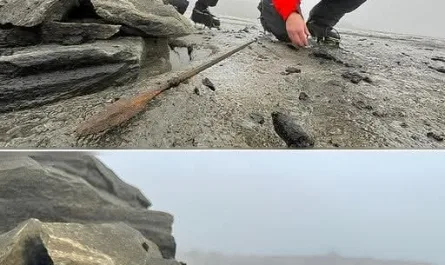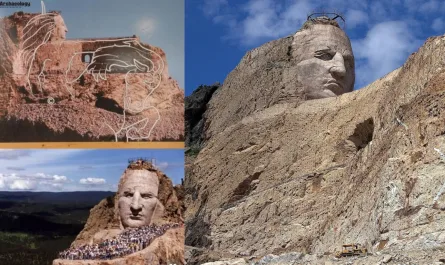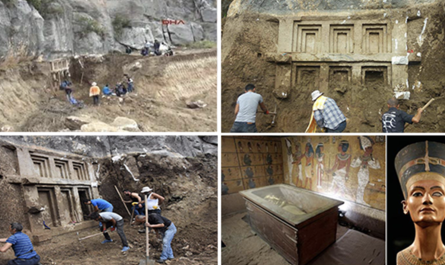The Bailong Elevator: A Glass Marvel on Zhangjiajie’s Cliffs
Perched on the side of a towering cliff in the Wulingyuan Scenic Area of Zhangjiajie, Hunan Province, China, the Bailong Elevator is a breathtaking feat of engineering. Rising 326 meters (1,070 feet), this glass-sided elevator is celebrated as the highest and heaviest outdoor elevator in the world. Completed in 2002, it offers visitors unparalleled views of the region’s dramatic sandstone peaks, lush valleys, and mist-shrouded landscapes, which inspired the floating mountains in James Cameron’s Avatar. This article explores the elevator’s design, significance, and ongoing allure as of 2025.
Design and Engineering
The Bailong Elevator, also known as the “Hundred Dragons Elevator,” was constructed to provide swift access from the base of a cliff in Wulingyuan to its summit, eliminating a strenuous two-to-three-hour climb. Its key features include:
- Height and Structure: At 326 meters, the elevator is built into a vertical quartz sandstone cliff, with three double-deck glass cabins operating simultaneously. Each cabin can carry up to 50 passengers, with a total capacity of 1,380 people per hour.
- Construction Challenges: Built between 1999 and 2002 at a cost of approximately $20 million, the project required drilling into the cliff to anchor the steel framework, a process complicated by the area’s geological instability and environmental sensitivity.
- World Records: The elevator holds records for being the highest outdoor elevator, the fastest passenger elevator (with a travel time of under two minutes), and the heaviest due to its robust steel structure designed to withstand the cliff’s weight and seismic activity.
The glass walls of the cabins provide panoramic views of Wulingyuan’s UNESCO World Heritage-listed landscape, characterized by over 3,000 karst pillars, ravines, and waterfalls, making the ride both thrilling and visually spectacular.
Purpose and Impact
The Bailong Elevator was designed to boost tourism in Zhangjiajie, a region renowned for its otherworldly scenery. By providing quick access to the cliff’s summit, it allows visitors to explore attractions like Tianzi Mountain and Yuanjiajie without exhausting treks. The elevator has significantly increased tourist numbers, with Wulingyuan welcoming millions annually, contributing to Hunan’s economy.
However, its construction sparked controversy. Environmentalists criticized the project for its impact on the fragile ecosystem, arguing that drilling into the cliff and increased human traffic could harm the area’s biodiversity. In response, authorities temporarily halted operations in 2002 for safety upgrades and environmental assessments, but the elevator has since operated smoothly, with strict regulations to minimize ecological disruption.
Visitor Experience
As of 2025, the Bailong Elevator remains a must-visit attraction in Zhangjiajie. The ride, lasting about 1–2 minutes, offers a heart-pounding ascent as passengers gaze through glass walls at the vertiginous drop and surreal landscape. At the summit, trails lead to iconic sites like the Avatar Hallelujah Mountain and the First Bridge Under Heaven. Tickets are priced at around 72 CNY (approximately $10 USD), with limits on daily visitors to manage crowds and preserve the site.
The elevator’s appeal is amplified by its cinematic connection to Avatar, drawing international tourists eager to experience the inspiration behind Pandora’s floating mountains. Posts on X highlight its popularity, with users describing the ride as “like soaring through a sci-fi film” and praising the “jaw-dropping” views, though some note long queues during peak seasons.
Challenges and Conservation
The Bailong Elevator faces ongoing challenges, including maintenance in a region prone to earthquakes and heavy rainfall, which can destabilize the cliff. Regular safety inspections and upgrades ensure its reliability, but environmental concerns persist. Authorities have implemented measures like limiting visitor numbers and monitoring ecological impacts to balance tourism with preservation of Wulingyuan’s UNESCO status.
Future plans may include enhancing accessibility with additional eco-friendly infrastructure, such as electric shuttles to reduce foot traffic in sensitive areas. Digital ticketing and virtual tours are also being explored to manage crowds and offer remote experiences.
Conclusion
The Bailong Elevator is a marvel of modern engineering, seamlessly blending human ingenuity with the natural splendor of Zhangjiajie’s Wulingyuan. As the world’s highest and heaviest outdoor elevator, it offers a thrilling ascent and unmatched views of a UNESCO World Heritage site. Despite early controversies, it has become a cornerstone of Hunan’s tourism, drawing adventurers and nature lovers to witness the cliffs that inspired a cinematic masterpiece. As Zhangjiajie continues to balance development and conservation, the Bailong Elevator stands as a testament to human ambition, soaring 326 meters into the heart of an ancient landscape.





